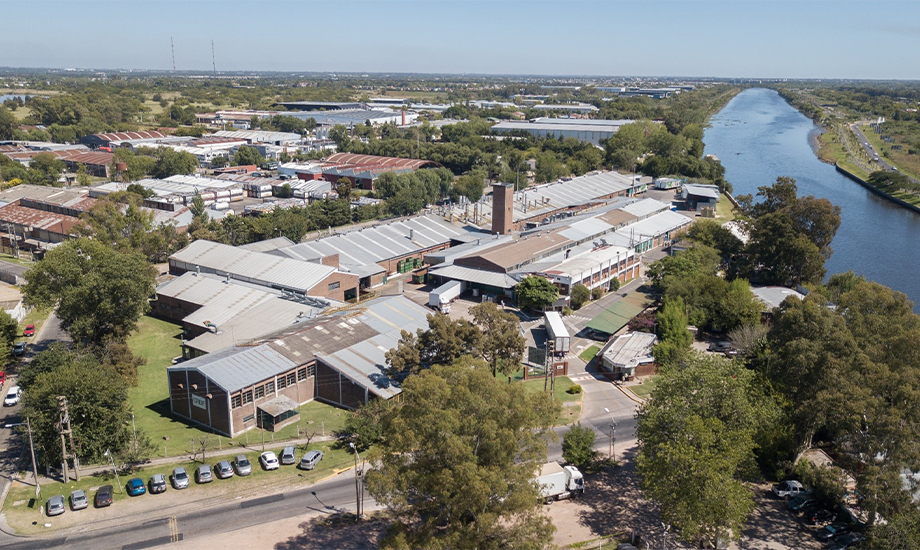亮点
- Greif 的气候战略贯穿于我们的整个运营过程,对于最大限度地减少 Greif 对环境的影响以及与客户有效合作以实现其与气候相关的目标至关重要。
- 应对气候影响需要全方位的整体解决方案,包括我们广泛的废物减少举措。
- 通过制定和推行“基业长青”战略,我们通过教育和宣传可能影响我们业务长期成功的气候风险和新兴趋势,加强了董事会对气候战略的监督。
- 2022 年,我们完成了对整个组织能源使用情况和相关排放的更全面盘点,使我们能够更好地了解我们的温室气体 (GHG) 足迹。2022 财年,我们的范围 1 和范围 2 GHG 排放量总计 1,321,500 公吨。我们的盘点覆盖范围更全面,导致总能源消耗和相关排放量同比增长。
气候战略为何重要
Greif 的气候战略融入了所有运营,对于与环境和客户建立有效的伙伴关系至关重要。我们的全球顶级关键客户已经表明,气候行动是重中之重,近一半的客户设定了雄心勃勃的脱碳目标。我们的目标是成为实现这些目标的重要合作伙伴。在我们的整个价值链中,我们实施能源和减排计划,通过提高能源效率、减少原材料和可再生能源迎接低碳未来。强有力的气候战略已被证明对于吸引人才至关重要。Greif 作为全球制造商的角色赋予了相当大的责任,但也提供了许多产生气候积极影响的机会,从而提供了竞争优势。
治理
Greif 有责任尽量减少我们的碳足迹。这一责任贯穿我们产品的整个生命周期,从原材料的提取到产品的报废。自 2010 年以来,Greif 一直拥有一个全球气候团队1,由来自所有业务部门和地区的代表组成,负责为工厂提供支持、指导和方向,以确定能源和减排项目。该团队还负责帮助工厂制定路线图并跟踪实现 2030 年目标的进展情况,以减少能源使用和绝对范围 1 和范围 2 温室气体排放。例如,作为我们最近 供应链 计划和相关路线图,我们正在努力减少车辆和叉车的排放。此外,我们的范围 3 排放中很大一部分与我们的原材料和产品的报废处理有关。我们努力推动可持续发展 创新 和 循环制造 支持我们的气候战略,并使我们能够与供应商和客户合作减少温室气体排放。
加强气候治理一直是我们“基业长青”战略“保护我们的未来”支柱的重点领域。因此,我们通过气候参与和教育加强了董事会监督,以加强我们的治理实践。这种参与提高了人们对气候风险和可能影响包装行业未来的新兴趋势的重要性的认识。这些对话有助于我们在运营部门内建立气候与排放之间的更多联系。
为了根据与气候相关财务信息披露工作组 (TCFD) 建议的差距分析结果进一步推进我们的气候管理实践,我们再次举办了一系列内部气候风险研讨会,以更好地了解我们业务面临的气候相关风险和机遇。通过研讨会,来自跨职能部门和我们全球足迹的同事合作识别、排名和评估监管、市场和物理气候相关风险和机遇。这些研讨会的结果在整个组织内共享,以更好地理解和解释我们的风险。此外,调查结果被整合到我们的风险管理流程和调查中,强化了已经实施的战略,例如我们的循环经济计划。2022 年,我们完成了第三方情景风险评估和转型风险分析,符合 TCFD 指南,以进一步了解我们的气候风险和机遇。我们还开始对我们的物理风险进行第三方评估,以确定它们对我们的业务有何影响,这项工作仍在进行中,我们计划在 2023 年分享我们的调查结果。请访问此报告的 风险管理 部分来了解有关我们的企业风险管理流程的更多信息。
|
风险/机会 |
话题 |
描述*
|
|---|---|---|
|
风险 |
自然灾害 |
大规模洪水/飓风/地震/风暴等导致关键或有价值的生产设施(一个或多个)的损失。 |
|
风险 |
碳定价机制 |
碳定价法规(例如限额与交易制度和碳税)正在一些市场(欧洲和北美)对 Greif 产生影响,并且可能在其他地区出现。这表现为一笔可观且不断增长的开支。 |
|
风险 |
投资/资本规划效率低下 |
缺乏资源来充分了解监管变化对战略决策和投资的影响可能会导致资本配置不理想。这包括设施比预期更快过时以及投资回报率低于预期。
|
|
风险 |
弹性/生产连续性 |
卓越的组织能力、相关的业务弹性、准备和敏捷性将使 Greif 能够更快地恢复生产水平,并在发生中断和灾难变得更加常见时更好地支持同事、客户和社区。
|
|
风险 |
直接环境灾难
|
三角洲、弗里兰和造纸厂等关键设施发生重大气候/天气相关事件,从而引发重大环境事件、金融事件,并可能导致公关/形象问题。
|
| 风险与机遇 | 客户偏好的转变 | 对可持续产品的需求正在增加。如果 Greif 未能迅速采取行动应对生产过程中再生材料的使用增加,则可能会减少对 Greif 产品和服务的需求。此外,限制 Greif 产品终端市场(如石油和天然气行业)的气候相关法规可能会限制 Greif 的业务,因为关键市场对其产品和服务的需求会减少。Greif 可以利用这一机会,迅速扩大我们的可持续产品组合。 |
| 机会 | 对 Greif 回收业务的影响 | 更宏伟的气候情景依赖于提高钢铁和塑料的回收率。如果定位正确,Greif 或许能够扩大其目前的修复实践规模。 |
|
机会 |
弹力
|
与业务弹性、准备和敏捷性相关的卓越组织能力将使 Greif 能够更快地恢复生产水平,并在发生中断和灾难变得更加常见时更好地支持同事、客户和社区。 |
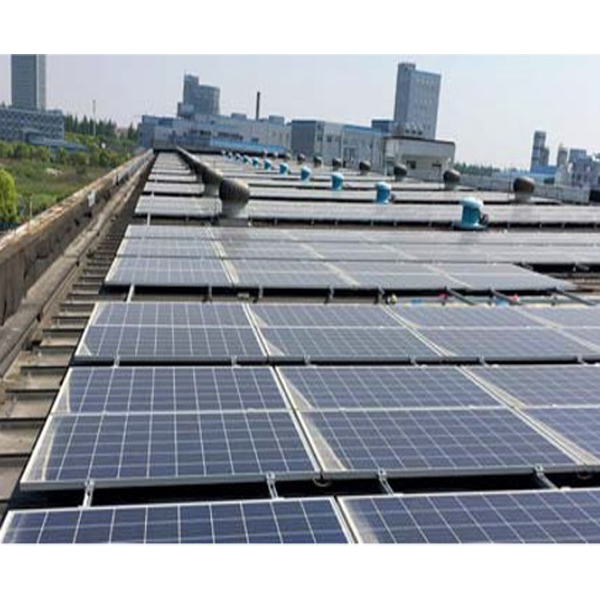
推进可再生能源
可再生能源,如生物质能、太阳能和风能,将在长期应对气候变化挑战中发挥重要作用。我们致力于在我们的全球运营中测试和扩展可再生能源技术,只要这样做在经济上可行并且符合我们利益相关者的最佳利益。总的来说,我们已经安装了超过 11,500 块太阳能电池板,太阳能发电量达 310 万千瓦时 (kWh)。自 2016 年以来,我们一直在增加从全球业务范围内的现场和场外地点采购的可再生能源数量。迄今为止,Greif 在北美、巴西、智利、中国、捷克共和国、以色列和荷兰的工厂都采购可再生能源。通过我们的持续投资,可再生能源现在占 Greif 能源使用量的 14%。我们继续评估采购更多可再生能源的机会。例如,我们进行了一项研究,评估和排名北美最适合现场安装太阳能的 Greif 地点。
过去几年,我们的能源总消耗量有所增加。我们正在深入研究对能源效率项目的投资,探索不同的融资机制和模式,以减少能源使用,并为能源和排放管理设定专门的预算。能源效率是资本部署的关键考虑因素,对于实现能源使用目标至关重要。我们将 ESG 纳入资本申请标准,作为我们资本分配系统的一部分,并筛选 ESG 效益。效益包括节省成本、减少能源消耗、减少原材料使用以及提高人员和产品的健康和安全。
2022 年,我们实施了 45 个节能项目,每年节省近 1300 万千瓦时 (kWh),整个组织节省约 $750,000。这些项目包括更换设备和更新减少能源需求的流程,例如遮阳、废热回收和实施节能 照明和暖通空调更换等实践。我们的同事不断寻找机会改进和升级技术和设备,以提高能源效率。为了更好地识别节能机会,我们对所有拉丁美洲 (LATAM) 工厂进行了审计,包括对所有工厂进行初步能源研究。研究确定了 447 个重点领域,其中前五个占 LATAM 地区总节能机会的 85%。我们正在根据这项研究的结果制定减少能源消耗的路线图。有关我们的节能项目的更多信息,请参阅我们的 C4.3、C4.3a 和 C4.3b 节 2022 CDP 气候响应.
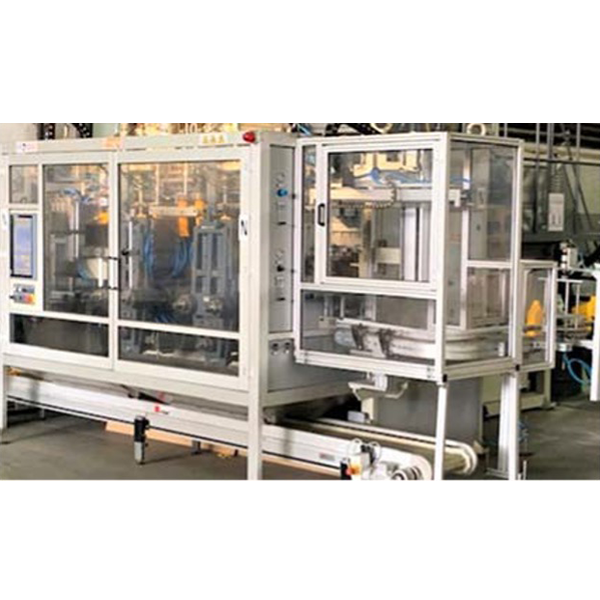
生产中的能源效率
Greif 最近投资了一台新的吹塑机,用于在摩洛哥卡萨布兰卡的工厂生产 Greif 的塑料油桶。新发动机比旧机器节省高达 30% 的能源,同时显著提高生产率。新设备将我们的 1 至 5 升瓶的生产能力提高了高达 25%,旨在优化和减少原材料的使用,将机器的环境效益扩展到能源使用之外。
摩洛哥团队还实施了其他能源效率项目,例如消除塑料和钢铁厂的空气泄漏、将四台机器上的液压挤出机替换为电动挤出机、升级旧设备以及将几台吹塑机上的直流电机替换为交流电机,这些都有助于显著降低我们的能源消耗。
Greif 认识到,应对气候影响需要全业务范围的整体解决方案。因此,废物管理是我们可持续发展战略中影响排放的更广泛部分。通过减少送往垃圾填埋场的废物量,我们可以减少与废物运输、分类和加工相关的排放。此外,我们的废物减少工作可防止产生垃圾填埋气,这是一种在废物分解时产生的特别强大的温室气体混合物。目前,我们将 85% 的废物从垃圾填埋场转移,并继续努力减少送往垃圾填埋场的剩余 15% 的废物。2022 年,我们将超过 150 万吨再生纸从垃圾填埋场转移。
*请参阅 Greif 的 2022 年 CDP 气候变化响应 了解更多信息
[1] 原全球能源团队
目标、进展与表现
2020 年,我们与第三方进行了详细的分析和评估,以了解我们是否有能力实现董事会批准的目标。 基于科学的目标倡议 (SBTi)。然后,我们宣布承诺到 2030 年将范围 1 和范围 2 的排放量在 2019 年的基础上减少 28%。这一目标符合现行的气候科学,即将全球变暖限制在 2 摄氏度以下。到明年年底,即 2023 年,Greif 还将完成对其范围 3 排放量的评估,并确定与科学基础目标倡议保持一致的长期净零排放愿望的可行性。
2022 年,我们开始研究和寻求可再生替代品,以取代我们目前的电力和天然气消耗。我们还宣布了承诺,以 2019 年为基准,每生产单位减少 10% 的能源消耗。此外,我们还专注于改进对虚拟购电协议 (VPPA) 的调查,并对北美工厂进行了现场太阳能研究。2023 年,我们将在我们的工厂进行能源审计并制定能源效率路线图。
2030年目标:
- 与 2019 年基线相比,将范围 1 和范围 2 的绝对温室气体排放量减少 28%。
- 与 2019 年相比,每单位生产能耗减少 10%。
|
|
2017 财年 |
2018 财年 |
2019 财年 |
2020 财年 |
2021 财年 |
2022 财年 |
|---|---|---|---|---|---|---|
|
活力 |
||||||
|
3,058,000 |
3,103,200 |
5,398,000 |
5,423,000 |
5,832,000 | 6,145,000 |
|
- |
- |
基线 |
- |
-0.3% | -2.3% |
|
温室气体排放量(千公吨) |
||||||
|
368 |
377 |
686 |
693 |
697 | 756 |
|
416 |
416 |
622 |
590 |
557 | 565 |
|
3,089 |
2,867 |
4,407 |
4,148 |
4,357 | 5,019 |
|
3,873 |
3,660 |
5,715 |
5,430 |
5,611 | 6,340 |
|
- |
- |
基线 |
- |
4.1% | 0.4% |
笔记:
- 由于 Greif 收购了 Caraustar,2019 年总能源和温室气体排放量大幅增加。我们的 2022 财年清单更全面地涵盖了他们的运营情况,并首次包括以下内容:全球设施的柴油和液化石油气消耗、全球丙烷使用量、洛杉矶设施的热电联产、全球租车使用量、仓库和办公设施的电力消耗。这导致总能源消耗和相关排放量大幅增加。
- 每单位生产能耗仅包括 PPS Mills、PPS CorrChoice、PPS IPG、PPS RFG、GIP EMEA、GIP APAC、GIP North America、GIP Latin America 和 LCS NA 的能耗。这样可以更准确地进行同比对比,与前几年的计算结果一致。
- 由于 Greif 修改了能源使用数据,2019 财年范围 2 排放量自 2021 年起已重新表述。
- 每单位生产排放量仅包括 PPS Mills、PPS CorrChoice、PPS IPG、PPS RFG、GIP EMEA、GIP APAC、GIP North America、GIP Latin America 和 LCS NA 的能源使用相关排放量。这样可以更准确地进行同比对比,与前几年的计算结果一致。
- 2022 年温室气体核查声明
智利 Greif Pudahuel 实现 100% 可再生能源
Greif 位于智利的 Pudahuel 钢铁厂是我们在拉丁美洲第一家 100% 使用可再生能源的工厂。通过与能源供应商 IMELSA ENERGIA 合作的为期两年的项目,该工厂能够将其全部电力供应转向 100% 可再生能源。该工厂为化学品、润滑油和食品饮料市场生产大型钢桶、锥形桶和水瓶。这一转变推进了我们的可持续发展战略,支持我们 2030 年的温室气体减排目标,并有助于支持我们客户的范围 3 减排目标。
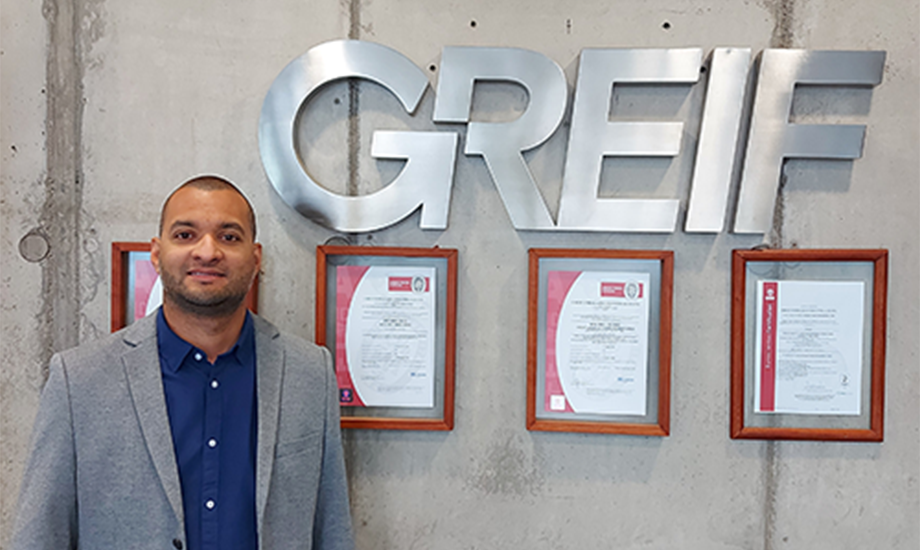
Enel X 需求响应
自 2011 年以来,Greif 一直与 Enel X 合作参与需求响应 (DR),Enel X 是 Enel Group Worldwide 的一个部门,Enel Group Worldwide 是一家跨国电力公司,也是全球电力和天然气市场领先的综合参与者,Enel X 的需求响应和实时能源监控使公司能够获得市场机会,从而将灵活性货币化、提高运营可靠性并突出可持续发展方面的进步。Greif 已累计获得超过 $3.5 百万的需求响应收益,仅 2021 年就达到 $385,000。目前大约有 54 个 Greif 站点符合需求响应和免费实时能源监控的资格,但尚未与 Enel X 签约。我们正在评估以确定站点是否符合参与需求响应的资格和合适候选人,以扩大我们对该计划的参与。
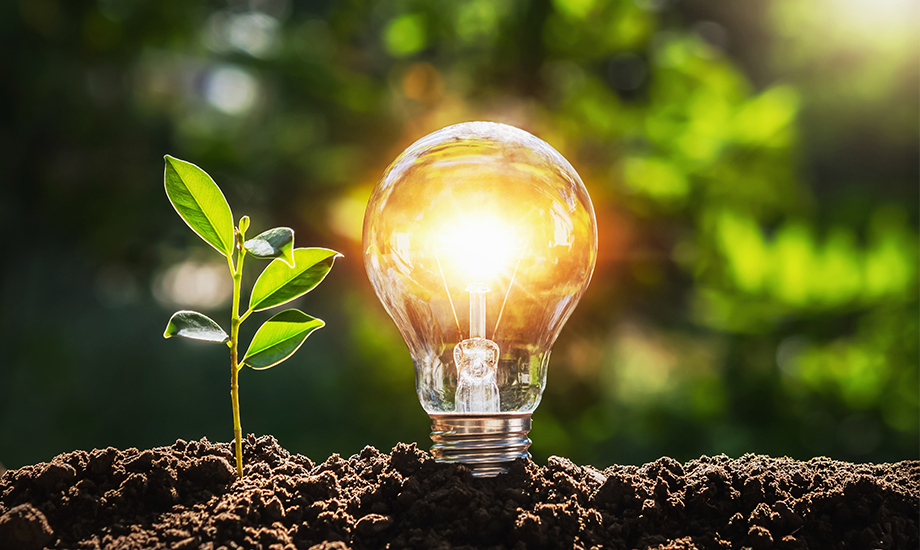
LATAM Tigre 能源研究
Greif 的 LATAM Tigre 工厂对所有拉丁美洲工厂进行了多学科评估,以实现到 2025 年单位产量能耗与 2019 年基线相比降低 6%。确定并评估了所有耗电的机器、外围设备、通用设备和元件,发现整个 LATAM 有 447 个能源重点领域。从这些重点领域中,确定了 70 个战略能源项目。截至 2022 年 11 月,已完成 14 个项目,每年节省 $72,500 能源成本,每年减少 573,000 千瓦时能源使用。这项能源研究是整个 LATAM 地区五个有影响力的项目之一,获得了 Greif 的 Michael J. Gasser 全球可持续发展奖,表明可持续性已很好地融入其业务的各个方面。
